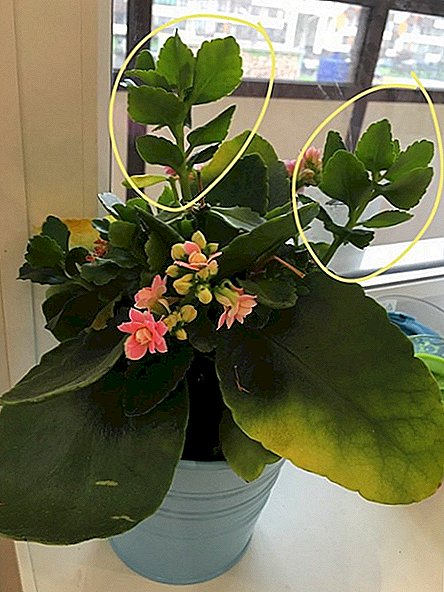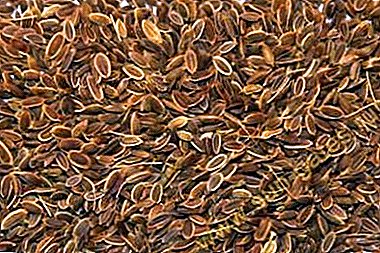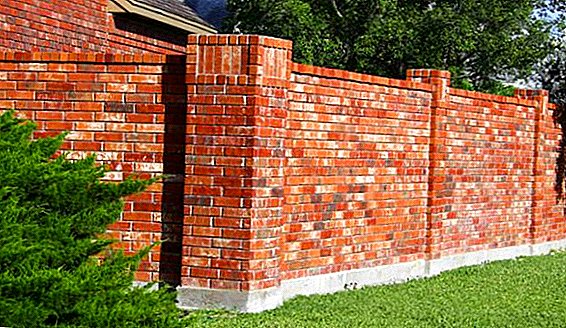 If you have a country house, plot or cottage, then you must have installed a fence. It can be made of metal, wood, slate and other materials. Brick fence is one of the most common species. Like any other, it can be built on its own. For this you need a set of tools, consumables and knowledge of laying the fence.
If you have a country house, plot or cottage, then you must have installed a fence. It can be made of metal, wood, slate and other materials. Brick fence is one of the most common species. Like any other, it can be built on its own. For this you need a set of tools, consumables and knowledge of laying the fence.
Brick fence: design features
The advantages of such a fence are quite a few:
- durable;
- lasting;
- does not require maintenance: painting, replacing broken sections, etc .;
- good looking.

Brick fences can be stacked in one or two masonry bricks. They vary in height. Can be solid or "lattice". Differ also by the height of the foundation.
Since the brick fence is quite heavy, a foundation is laid under it that can withstand a large load. On the foundation, with the help of a level, corners are drawn, poles are installed and sections are laid out.
Find out also how to make a fence from gabions, from a picket fence, from a chain-link grid, a wicker wooden fence to give.
Sections can be made of brick or using other materials. For the construction of the fence is suitable for any kind of brick.
The price of the material depends on several factors:
- from the country of origin. Belarusian is considered cheaper;
- from the seller. The price of the manufacturer is cheaper than the price of the seller;
- from the cost of delivery;
- on the size and specifications.

Did you know?The longest fence length of 5,614 km was built in Australia in 1885 to protect the sheep from dingoes.
Advantages and disadvantages of brick fences
The advantages and disadvantages of the design are directly dependent on the properties of the material used in construction.
The brick is strong, resistant to fire, durable, not subject to mechanical damage, can be made in several colors: white and shades of orange. Can be combined with metal fragments.
The most common fences of ceramic bricks. But you can use varieties of facing, especially in the construction of a structure of two bricks. Most often for the construction of fences used silicate brick.  This is due to its resistance to temperature extremes and its ability to withstand severe frosts without damage. Disadvantages brick, as the main material of the fence, almost does not have.
This is due to its resistance to temperature extremes and its ability to withstand severe frosts without damage. Disadvantages brick, as the main material of the fence, almost does not have.
pros
Brick fence has several advantages:
- maintains strength in any atmospheric conditions;
- does not require additional annual painting, washing or other types of care;
- it will not lose its aesthetic appeal during operation.
Minuses
The disadvantages are not only high cost, but also the complexity of the brickwork, the need for its removal in accordance with the level. If a brick taken for construction is of poor quality, then it will quickly lose its appearance and its performance. 
Did you know?One of the most unusual fences is the fence of New Zealand, built of bras. In 2006, their number reached 800 pieces.
Main types: how to choose a brick fence
First of all, when choosing a fence, we are guided by personal preferences.
Solid fence choose people who would like privacy on your site. But it should be borne in mind that part of your site may be permanently or periodically shaded by a solid wall of the fence.  Solid brick fence with curly masonry
Solid brick fence with curly masonry
Those who wish to add more light to the plants on the site make a fence in the form of a grid, i.e., with slots so that the fence does not create a thick shadow. Combined versions with inserts are interesting for their design solutions.
You will be interested to know how to properly plan the dacha, as well as make a decorative waterfall, garden swing, fountain, stone grill, rock arias, dry stream, pergola, gazebo, garden garden with your own hands.
We often meet fences with metal, wooden, slate inserts. A masterpiece of blacksmith art will be a design with elements of forging. Such a fence can be decorated with ornaments of any shape.  Brick and picket fence
Brick and picket fence
Lined
Lined brick can be ceramic, clinker, hyperpressed and silicate. Bricks are made from clay by firing. The processes of making clinker and ceramic types differ only in raw materials and firing temperature.
Hyper pressed is obtained from granite sifting, water and cement. It features textured, uneven edges, which allows its use for designer masonry. Silicate is made by calcining silicate sand and slaked lime in an autoclave.
Brick can be made in standard, rectangular form, and figured versions. The color scheme may also be different.
To install a brick fence fit any type of brick, it all depends on your desire. Combinations of different types are also possible. For example, the columns are from the hyperpressed, and the sections are from the clinker.  Facing brick fence
Facing brick fence
With forging elements
A fence with forged elements consists of bricks and forged metal elements that are combined in various combinations. Forged may be the entire section between the pillars or the upper part of the section in the shape of a semicircle.
The design can be supplemented with a forged belt along the top of the fence. The ratio of bricks and forged fragments depends on the design.
A feature of such structures is the need for preliminary calculations on the number of bricks and the model of its laying. For the semicircular sections it is also necessary to have a tool for cutting bricks.  Brick fence with forging elements
Brick fence with forging elements
Important!The tops of the fence posts can be made from both concrete and metal forged hubcaps. Metal tops attached dowels from the bottom to the brick.
With wooden inserts
The features of the structures with wooden inserts are the same as with forging elements. If you plan to manufacture sections of wood, then you need to decide whether they will be solid or lattice.
If the main goal is to protect against intrusion into the territory, then a wooden fence will not work for you. It is less durable than completely brick. If its function is decorative, then wooden figured grids in sections can be very attractive.
The cost of the fence with wooden inserts will be much cheaper than other types.  Brick fence with wooden stakes
Brick fence with wooden stakes
With sheets of corrugated
The combination of brick and corrugated flooring looks attractive and has a number of undeniable advantages. Relatively inexpensive, beautiful and reliable profiled sheeting is resistant to all types of impact: mechanical, climatic and atmospheric.
In case of damage to one of the sections, it is easy to replace it with another with the same section. Such a fence is easily mounted, does not require painting and additional maintenance.  Brick fence with sheets of corrugated
Brick fence with sheets of corrugated
Installing a brick fence: useful tips and advice
To create such a fence, you first need to decide on the appearance and materials used. Having chosen a material, calculate its quantity and estimate the preliminary cost.
Do not forget that, in addition to basic fixtures, you will need a corner, fittings or pipes, electrodes, screws and other consumables.
Learn how to make beds of tires and stones with your own hands.For work you will also need:
- concrete mixer or tank for the preparation of the solution;
- rope or construction cord for marking the area under the fence;
- Bulgarian and disks to it for cutting bricks and additional materials that will be involved in the design;
- for marking and checking the corners you will need a level and a tape measure;
- a mortar and a bucket will be needed to prepare the solution
- for digging ditches need a shovel.

Required materials:
- cement, sand and water for solution;
- brick to create a fence;
- additional materials if the fence will be combined.
The brick will be laid on cement mortar. To prepare the solution, a portion of cement is mixed with three portions of sand with the addition of water to a plastic mass.
The process can be simplified if, instead of individual components, you buy in the store a special ready-made mixture for masonry. 
Important!Reinforcement of cement mortar will be performed at a distance of 10 cm. The thickness of the rod must be at least 1 cm. The rods can be fastened together with wire.
Planning and creating a project
Calculate the required number of bricks. To do this, write the total length and height of the fence, the length, width and height of the columns. We carry out the calculation of the quantity, based on the fact that you know the height and width of your chosen brick.
How to build a brick fence. The most beautiful fences: video
Additionally, consider how it will be done laying: one brick, one and a half or two.
It will be useful for you to learn how to make with your own hands a veranda to the house, a blind area of the house, concrete walkways, trellis for grapes.
The second version of the approximate calculation is based on the fact that 1 square. m single wall masonry takes 100 units of bricks, and with double masonry - 200 units. Thus, knowing the area of the fence, you can always perform the calculation of the quantity.  Calculate separately the consumption of material on the columns, taking into account the fact that there must be a distance of 2-2.5 m between the columns. The calculation of the required amount of sand and cement will depend on the type of mortar.
Calculate separately the consumption of material on the columns, taking into account the fact that there must be a distance of 2-2.5 m between the columns. The calculation of the required amount of sand and cement will depend on the type of mortar.
Calculations and purchase of materials
Prepare a drawing showing the exact dimensions of all the elements. The drawing will allow you not only to calculate the amount of materials, but also to mark up directly at the site of the future fence and, as the work progresses, perform a check of the calculated parameters in order to avoid installation errors.
Purchase of materials spend, on the basis of your calculations. The peculiarity of the purchase will be that if the brick is usually bought all, then the materials for the solution can be bought off as work progresses. It will save you from unnecessary expenses if you make a mistake when determining the amount of cement or sand. 
Preparatory work on the site and its layout
Roulette, pegs and construction cord or rope are used to mark the plot. We drive in pegs in the corners of the future fence, marking its beginning and end. Between the pegs we stretch the rope.
In order not to lose orientation, drive in pegs along the entire future trench at a distance of 1 m from each other. Check the angle with a square, they should be absolutely straight.
We are preparing the foundation
- We dig a trench for the foundation. The width of the pit should be 60-70 mm wider than the future masonry. This is due to the need to install a formwork in the pit. The depth of the pit - 80-100 cm. Align the walls and bottom of the pit.

- To create drainage we put a layer of sand in the pit. The layer thickness is about 10 cm. We ram the sand with a rammer. We install formwork boards, checking them by level. The future foundation should be smooth, without distortions. If the soil on which the fence is installed is subject to movement (clay soils with a large amount of moisture), then the foundation can be made with a slight thickening downwards. Such a trapezoidal shape will increase the stability of the structure.
- In the pit install pipes, which will serve as an axis for the posts, and reinforcement, which will strengthen the foundation. If you do not reinforce the foundation, the shrinkage of the soil can lead to cracks, which are then quite difficult to close up.
- In the trench, pour concrete. To enhance the strength of the solution, you can add gravel. The surface of the fill is carefully aligned. To remove excess air, pierce the structure with reinforcement in several places.

- Formwork can be removed after 10 days, and the foundation will need from 3 to 4 weeks to gain strength and dry. It is recommended to periodically water the structure with water in hot weather to prevent surface cracking. Cracking occurs due to intensive drying of the upper layers.
Construction of the structure
Preparation for laying:
- brick will be laid on the cement-sand mortar. Knead the solution by hand or concrete mixer. Structure: 1 share of cement, 3 shares of sand, 1 share of water;
- before laying the bricks dipped into the water for 1 minute.
The meaning of the procedure is that the brick is made of clay, and the clay absorbs water well. Therefore, in hot weather, it can "pull" water from the solution, which will lead to drying out and reduce the strength of the masonry.
Choose the most suitable plants for planting along the fence.The fence can be laid out by two technologies:
- first make columns, then fill the sections between them;
- masonry walls and columns perform simultaneously.
 Erection of pillars
Erection of pillarsWe recommend simultaneous laying, as in this case you will be able to slightly move on the structure, if there is a discrepancy in size somewhere.
If the discrepancy is found in the section after the finished columns are completed, then you will have to spend time and effort on cutting the brick of the right size. 
- Check the brick layout without a solution. Laying the first row is very important: if you make a mistake and put it crooked, this feature will remain in the entire fence.
- Apply to the place of the corner column layer of the solution. We lay on it the first row. The mortar can be applied to the side face with a trowel before laying the brick in the masonry, or after laying it and fitting it. Make sure that the amount of mortar between the individual bricks is approximately the same. Masonry column consists of 4 bricks that form a square. The inside of the square will be filled with mortar.
- We compare the first row of the column level. If necessary, trim it.
- Tension the construction cord or rope along the masonry at the level of the first row of the laid column.
- In the same way, form the bottom row of the remaining columns and sectional laying. If you lay a fence in two bricks, first lay a row of the first bricks and then a row of the second. Verify masonry level.
- To impart structural strength through several rows, reinforcing mesh is laid on columns and in sections. Its task is to increase the strength of the structure. The grid is placed on the solution and the top is covered with a thin layer of solution.
- On the day it is recommended to lay no more than 50 cm of height of the laying. This is done to impart stability to the structure.
- The finished fence can be left in the form of clean masonry, and you can plaster and paint in the desired color.
 Despite the fact that installing a fence on your own is a cumbersome process, but the result of your efforts will pleasantly please you. Observe the technological processes, and your fence will be perfect in execution and absolutely durable.
Despite the fact that installing a fence on your own is a cumbersome process, but the result of your efforts will pleasantly please you. Observe the technological processes, and your fence will be perfect in execution and absolutely durable.Feedback from network users















